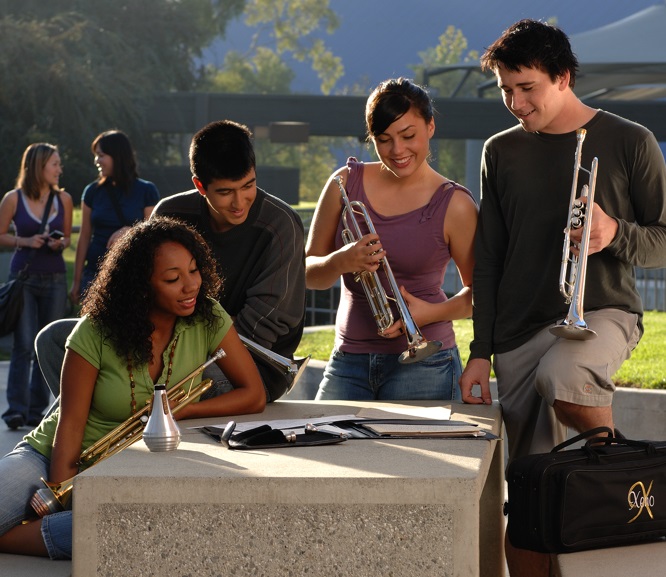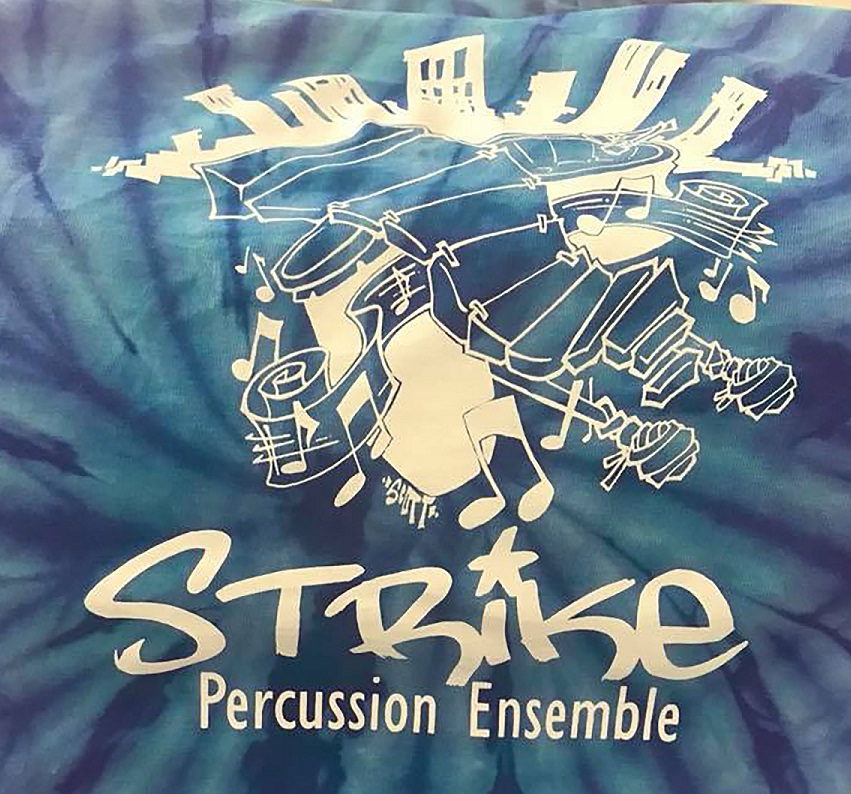Teach Student Leaders to Teach
Empower your student leaders to be instructors and peer tutors, and they will take more ownership of your program.
I highly recommend engaging and empowering your student leaders to be instructors for music, marching or even as peer tutors for other academic subjects. When your student leaders begin to take more ownership of your program, the overall culture and morale will improve.
The Value of the Student Leader as a Teacher
The first step in empowering student leaders is to recognize their value. They want to serve their peers and make a difference.
I know this firsthand because I was a drum major of the South Brunswick (New Jersey) High School band in 2002 and 2003, and then a drum major for the Crossmen Drum Corps from 2005 to 2007. My instructors regularly spoke about the importance of servant leadership and working hard to manage logistical aspects for our organizations.
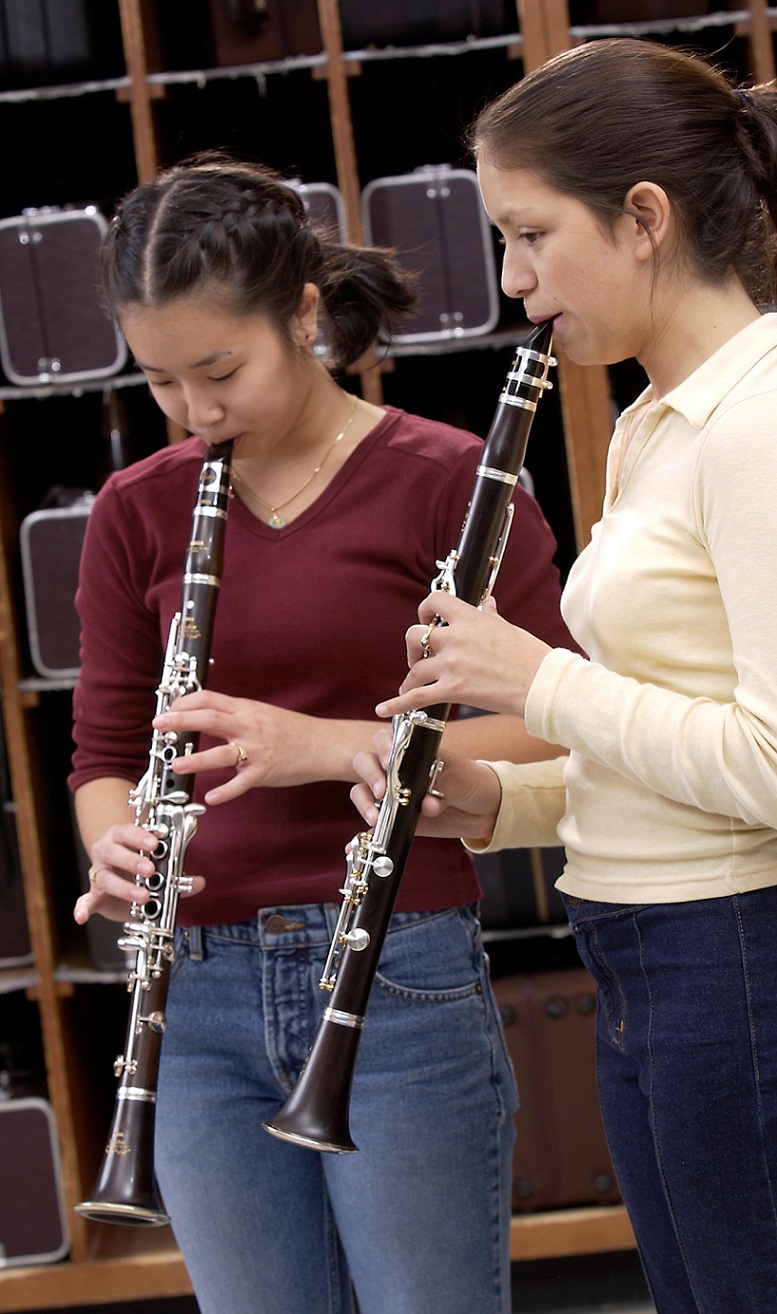 When we opened Claudia Taylor Johnson High School (CTJ) in 2008, one of our band directors, Mr. Manuel Maldonado, regularly discussed the role of student leaders at his prior campus, Cedar Park High School (in the Leander Independent School District). He explained that there were many different tasks that student leaders managed. Maldonado, who also instructs student leadership workshops for SASI, one of the most popular companies for student leadership in the country, is a master at motivating students and managing logistics. He created a structure at CTJ that we still utilize today.
When we opened Claudia Taylor Johnson High School (CTJ) in 2008, one of our band directors, Mr. Manuel Maldonado, regularly discussed the role of student leaders at his prior campus, Cedar Park High School (in the Leander Independent School District). He explained that there were many different tasks that student leaders managed. Maldonado, who also instructs student leadership workshops for SASI, one of the most popular companies for student leadership in the country, is a master at motivating students and managing logistics. He created a structure at CTJ that we still utilize today.
CTJ student leaders set up rehearsals, clean the band hall, manage on-campus events, conduct music pass-offs, run sectionals, develop bonding experiences for their peers, and even help with academic tutoring. Maldonado is a firm believer that the more invested students are in managing the program’s day-to-day operations off the field, the more it would improve their buy-in when it came time for rehearsals and performances. And he was right!
Over the past 14 years, we have turned over many aspects of managing CTJ’s band program to our student leaders, and it has had a profound impact on so many levels. For schools with a single director, utilizing student leaders as instructors could provide the director with an “army” of junior teachers to enhance the overall program.
Score with SCORE (Student Care of Resources and Equipment)
While student teaching at Ronald Reagan High School, which is in the same district as CTJ, I observed many ways that student leaders helped run logistical aspects of the program and mentor and teach students. Reagan utilized a system with section leaders and line leaders. These leaders would take their smaller group from the basics block and spend 10 to 15 minutes of rehearsal working on visual and musical assignments. These included more straightforward exercises like taking a single step, posture or horn moves, as well as musical assignments like a few measures of the show that the section was struggling with. I was so impressed with the Reagan student leaders’ intensity, professionalism and detail.
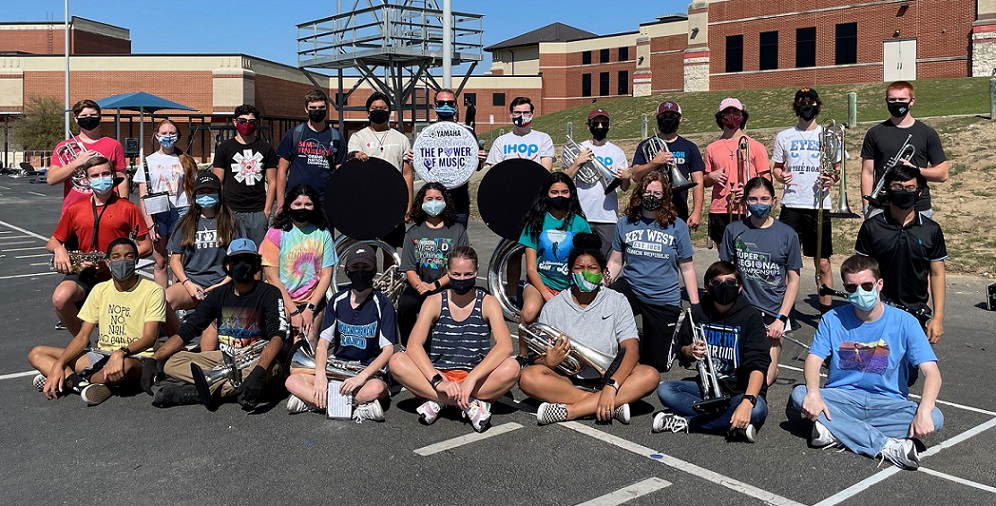 Reagan also had a logistical team called SCORE, which stood for Student Care of Resources and Equipment. This team included 10 to 15 students who were dedicated to keeping the band hall clean, setting up for rehearsals and managing events. Line leaders and section leaders were often members of SCORE as well. The Reagan students were so motivated to serve the program, and because they had a voice in the process, they took ownership of all tasks, big and small.
Reagan also had a logistical team called SCORE, which stood for Student Care of Resources and Equipment. This team included 10 to 15 students who were dedicated to keeping the band hall clean, setting up for rehearsals and managing events. Line leaders and section leaders were often members of SCORE as well. The Reagan students were so motivated to serve the program, and because they had a voice in the process, they took ownership of all tasks, big and small.
This kind of dedication is not unheard of. In many schools in Japan, students maintain their classrooms, serve lunch to their peers and even clean the toilets. These students focus not only on academics but also on how to be good citizens.
Student leaders in many Japanese programs also manage logistics for band. Teaching and instructing their peers is seen as rewards for student leaders’ efforts at maintaining facilities. We have adopted this system at CTJ after seeing it work in many other programs.
As you increase student leaders’ role as instructors, you will provide an incentive for them to participate in the less visible behind-the-scenes tasks.
Structure of Student Leadership
At CTJ, our student leadership hierarchy is divided into elected officers and appointed leaders. Elected , which are voted on by the students in the spring for the upcoming academic year, include:
-
- Vice President of Music Library
- Vice President of Logistics
- Vice President of Uniforms
- Vice President of Special Events
- Secretary
- Freshmen Class Representative (elected during Band Camp)
These students serve on the Student Executive Board and are involved in various decision-making processes throughout the year, including trips, budgetary expenses, band banquet, volunteer opportunities and overall culture-building exercises. The board manages the quartermasters, music librarians and logistics team. All the board members, as elected officers, provide a voice for the students in band and also serve as teachers and mentors.
Elected officers may also serve in a section leader role or another position, but they would be required to participate in the teaching workshops if they pursue an appointed role. The Student Executive Board does not include the section leaders or drum majors, only those in elected positions.
Appointed positions at CTJ include:
-
- Drum Major (also serves as our Band President)
- Assistant Drum Majors/Conductors
- Captains
- Section Leaders
- Quartermasters (usually 3-4)
- Music Librarians (usually 3-4)
- Members of SCORE (usually 10-15)
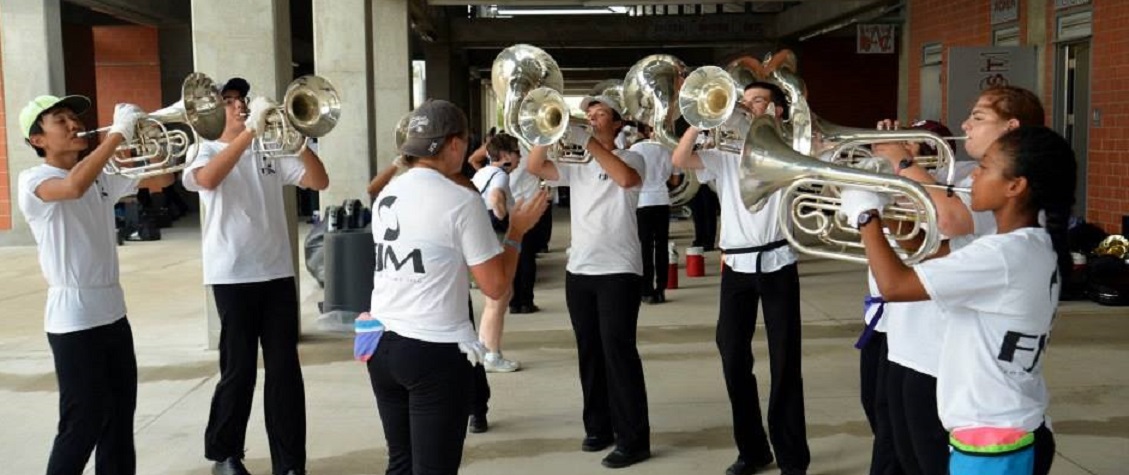 Students in appointed positions apply each spring and submit a resume, portfolio and teacher references, and they go through an interview process and teaching audition. Drum major candidates also complete a conducting audition. Appointed positions are selected by a committee that includes band directors from the high school and middle school, private lesson teachers, former student leaders and several guest panel members, including marching techs or visitors from another district school.
Students in appointed positions apply each spring and submit a resume, portfolio and teacher references, and they go through an interview process and teaching audition. Drum major candidates also complete a conducting audition. Appointed positions are selected by a committee that includes band directors from the high school and middle school, private lesson teachers, former student leaders and several guest panel members, including marching techs or visitors from another district school.
Students in appointed positions conduct sectional rehearsals over the summer, during band camp and do music pass-offs during the marching season. They are the go-to mentors for our younger students who need additional help with marching responsibilities in the fall. Appointed student leaders also serve as peer tutors for their sections in the spring.
Teaching Workshops
At CTJ, we expect all our student leaders to teach or serve as teachers at some point. It is a prerequisite that they participate in a teaching seminar before serving in one of our roles. This means that the directors need to teach students how to teach.
During the spring semester, before applications are accepted for appointed positions, we conduct several teaching workshops, where we introduce and practice four areas of teaching: 1) planning and process, 2) content and vocabulary, 3) execution and pacing, and 4) reflection.
Planning and Process — For our purposes, student leaders create lesson plans to teach four different topics for marching season: posture, breathing, taking the first step and breaking down a difficult passage of music. Students plan for a five-minute lesson that can eventually grow into a 10- or 15-minute sectional, and finally into a 45-minute sectional. Lesson plans include objectives/goals, time spent on each objective and specific techniques/verbiage to help. We are looking for what their process will be during the time they teach.
Content and Vocabulary — As capable as our student leaders are, band members will likely not react or respond to issues with them the same way they would with an experienced educator. However, student leaders can learn to correct specific details and processes. They can be trained as taskmasters to combine limited feedback with maximum repetition. Sometimes the feedback can be as simple as “play together” or “that’s too long/short/loud/soft.” Student leaders can also correct body posture, rehearse horn moves and provide feedback to help their peers execute cleaner. It is critical to train student leaders early on to use the right vocabulary and have meaningful content in their lessons to avoid any discomfort or awkwardness as they take charge of their rehearsals.
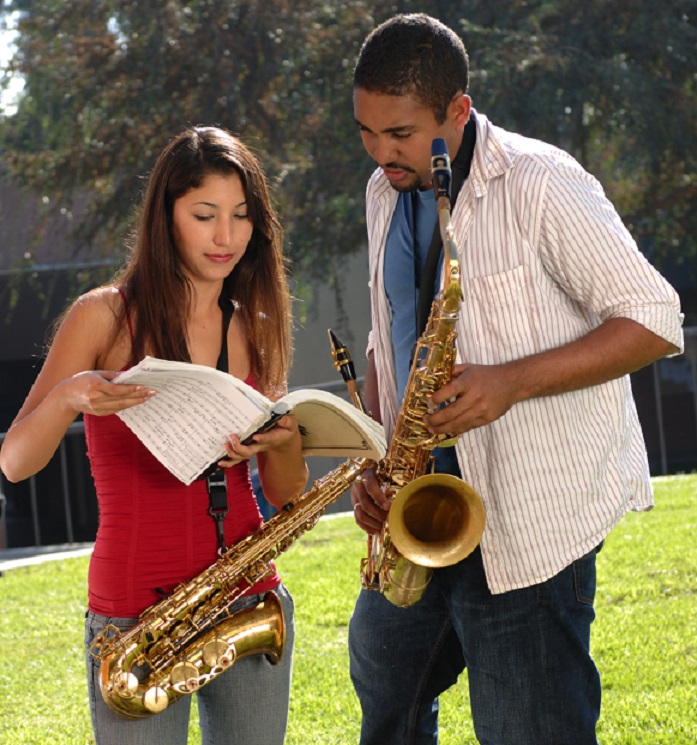 Execution and Pacing — In our teaching workshops, student leaders break into groups of 10 to 12 to practice teaching with one another. Each student will inform the others in the group what he or she plans to do, take them through the lesson and then receive feedback from a director or coach on improving the lesson. Student leaders learn pacing, time management and how their peers respond to feedback. This is where directors work with student leaders to develop patience, kindness, compassion and confidence. Topics we focus on during this process:
Execution and Pacing — In our teaching workshops, student leaders break into groups of 10 to 12 to practice teaching with one another. Each student will inform the others in the group what he or she plans to do, take them through the lesson and then receive feedback from a director or coach on improving the lesson. Student leaders learn pacing, time management and how their peers respond to feedback. This is where directors work with student leaders to develop patience, kindness, compassion and confidence. Topics we focus on during this process:
- Speaking Voice— A great instructor must project and speak loudly enough for all students to hear instructions and feedback. Student leaders must practice speaking louder than they are comfortable with.
- Poise and Pacing— Student leaders must avoid mumbling and using filler words like “uh,” “um” or “” They must practice balancing verbal instruction and movement during a lesson.
- Is the student engaging?— Frankly put, can the student leader hold the attention of the group? Is the lesson engaging? Does the time seem to fly by?
- Appropriate Feedback— After completing a rep, can the student leader see what is wrong and provide a proper correction?
- The Awkward Factor — Does the lesson feel awkward? Is the leader awkward? Long pauses in delivery, awkward jokes, uncomfortable silences lead to a sense of discomfort for the group.
- Setup of the “classroom” — Standing in a block works but is not necessarily the best way to keep students engaged. Does the student leader setup the classroom to best reach his/her group?
Reflection — We will discuss as a group how the process went and highlight examples of successful teaching, as well as areas to improve. By watching their peers, student leaders can learn what to do as well as what not to do. The directors and staff at CTJ work hard to create a safe environment where student leaders are supportive — not judgmental — and truly want to see everyone succeed.
Ultimately, the success of peer teaching hinges on how the director or staff carefully mentor and monitor the process. As the primary leader of the organization, the director can provide the best guidance for eager student leaders.
Do the elected positions also take part in the teaching workshops? I can see a band member who is extremely organized be great at overseeing the music library, but perhaps not at teaching his/her section.










